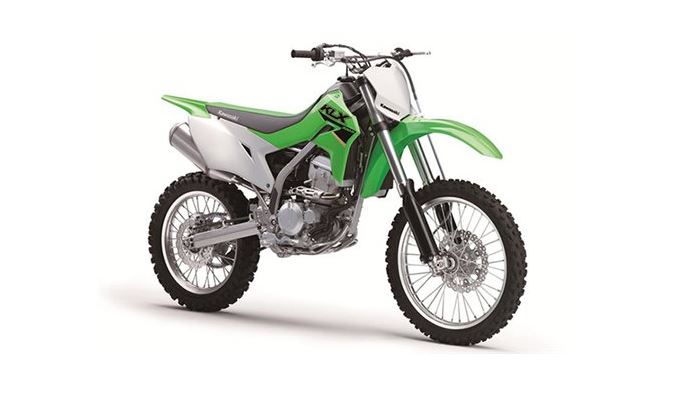2022 Kawasaki KLX300R Rear Suspension
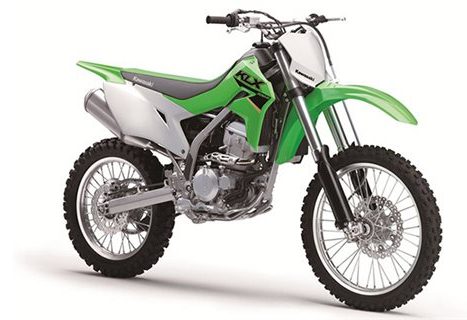
Rear Suspension
Rear Shock Absorber Inspection
NOTICE
Sticking mud or dust on the sliding surface of the rear shock absorber could damage the oil seal, leading to an oil leak. Clean the sliding surface after each ride.
- Pump the seat down and up by 4 or 5 times, and inspect the smooth stroke.
- If it does not smoothly or noise is found, inspect the oil leak and rear shock absorber mounting.
- Visually inspect the rear shock absorber for oil leakage.
- If necessary, replace by an authorized Kawasaki dealer.
Rear Shock Absorber Adjustment
Any of the following shock absorber adjustments can be made to tune the rear suspension to the rider’s weight and the condition of the track.
Rebound Damping Adjustment
To adjust the rear shock absorber rebound damping, turn the rebound damping adjuster at the bottom of the rear shock absorber with a flat tip screwdriver
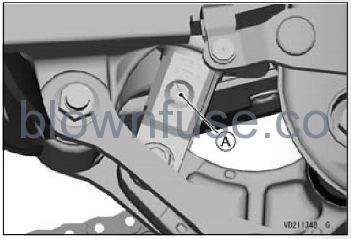
A. Rebound Damping Adjuster
If the damping feels too soft or too stiff, adjust it in accordance with the following table.
Rebound Damping Adjuster Settings
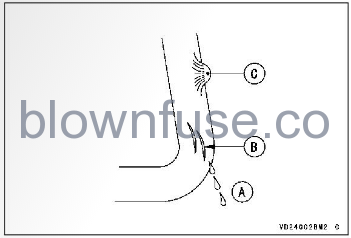
A. Seated Position (Adjuster Turned Fully Clockwise)
B. Softer (Counterclockwise)
C. Harder (Clockwise)
D. Standard Setting
Number of turns counterclockwise usable range 18 clicks or less. Although you can turn the adjuster beyond the adjustable range, effecting no changes to damping force, use it within the adjustable range.
Standard Rebound Damping Adjuster Setting
10 clicks
Counterclockwise from the fully seated position
NOTICE
Do not force the rebound damping force adjuster beyond the fully seated position, or the adjusting mechanism may be damaged.
NOTE
Adjustment of the rebound damping adjuster for the rear suspension will slightly affect the compression damping force. Always make any damp- ing adjustments in small steps and test their effects before using them in competition.
Compression Damping Adjustment (Gas Reservoir)
There are two adjustments you can make to the rear shock absorber gas reservoir. To adjust the compression damping, turn the compression damping adjuster with a flat tip screwdriver.
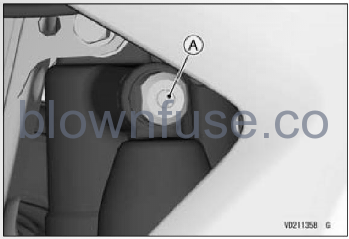
A. Compression Damping Adjuster
If the damping feels too soft or too stiff, adjust it in accordance with the following table.
Compression Damping Adjuster Settings
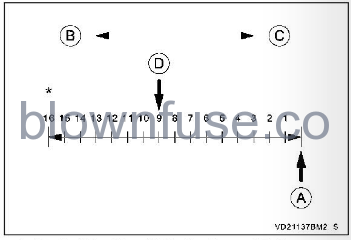
A. Seated Position (Adjuster Turned Fully Clockwise)
B. Softer (Counterclockwise)
C. Harder (Clockwise)
D. Standard Setting
Number of turns counterclockwise usable range 16 clicks or less. Although you can turn the adjuster beyond the adjustable range, effecting no changes to damping force, use it within the adjustable range.
Standard Compression Damping Adjuster Setting
9 clicks
Counterclockwise from the fully seated position
NOTICE
Do not force the compression damping force adjuster beyond the fully seated position, or the adjusting mechanism may be damaged.
NOTE
Adjustment of the compression damping adjuster for the rear suspension will slightly affect the re- bound damping force. Always make any damping adjustments in small steps and test their effects before using them in competition.
Spring Preload Adjustment
The rear shock absorber can be adjusted by changing the spring preload for various riding and loading conditions. If the spring action feels too soft or too stiff, have it adjusted by an authorized Kawasaki dealer.
